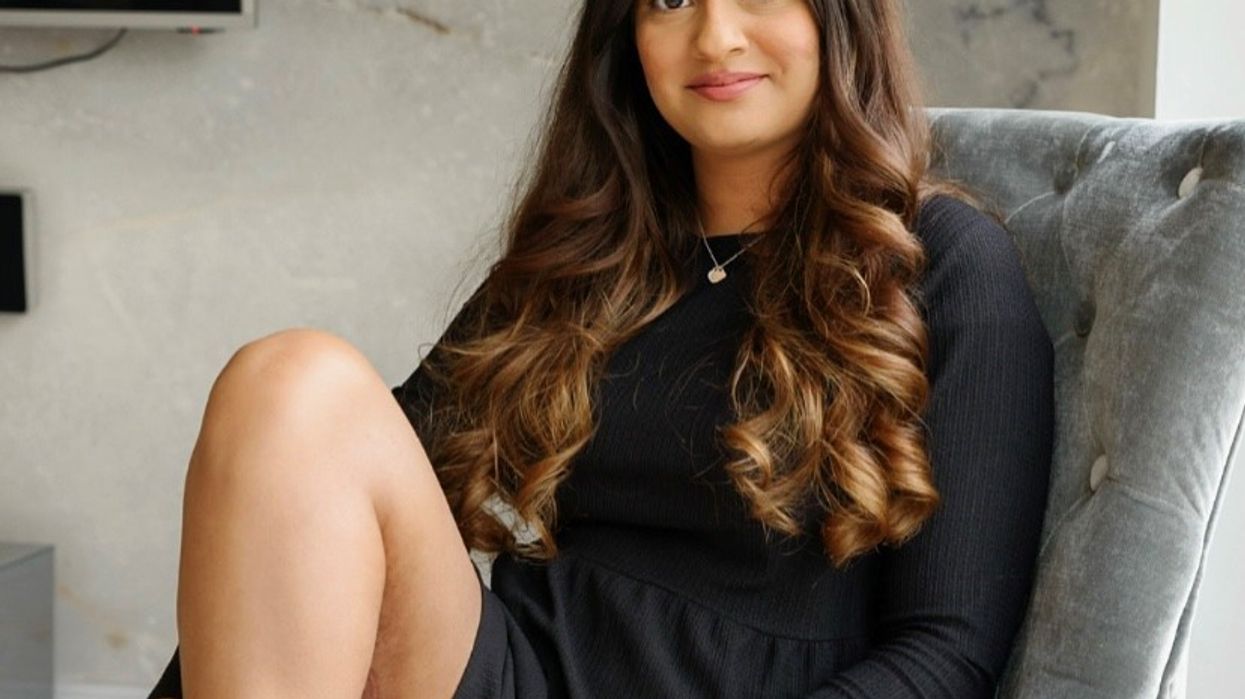GEETA PATEL SPEAKS ABOUT HER EMOTIONAL JOURNEY AFTER A TERMINAL DIAGNOSIS
Geeta Patel had just got married and bought a house.
Then on August 25, 2020, the 25-year-old noticed a lump on her leg while having a bath and didn’t know what it was. The young estate agent from Wynyard was diagnosed with sarcoma, a cancer of the soft tissue, and despite treatment was told the disease had spread to her lungs and was deemed incurable.
Instead of giving up, she has bravely gone through gruelling radiotherapy, immunotherapy, and her current treatment of a clinical trial, where she takes chemotherapy in tablet form.
Two years later, and the 27-year-old is continuing to battle the deadly disease and supporting the Stand Up To Cancer campaign from Cancer Research UK. Eastern Eye spoke to Geeta about her deeply emotional journey, being told it was terminal, bravery, lifesaving clinical trial, future hopes, and key advice for those diagnosed with the disease.
What happened after you discovered the lump on your leg?
I didn’t think it was cancer. My husband Ankush is a dentist, and he wasn’t sure what it was. I started Googling and found something about sarcoma but didn’t think it could be that. I showed my work colleagues too. I then did a Zoom call with the GP and was referred for an ultrasound the next week. The GP rang a week afterwards and asked me to come in and bring someone.
How did you feel when that happened?
I called Ankush! He sounded worried and said that is what he says to people when he suspects mouth cancer. Suddenly, I was scared and started crying. I got to the doctor and rang the bell to go in, but due to Covid practices, I was waiting for Ankush. The receptionist gave me a bottle of water and I just sat there. My first question to the doctor was, “It’s not cancer is it?” and they said “we can’t rule it out”. I couldn’t breathe.
That must have been really harrowing. What happened next?
We asked about the next tests, and they said X-ray, biopsy, and MRI. There was a lump on one scan about 5cm and they said it was probably sarcoma. I was so upset and couldn’t believe it was what I had seen on Google that first day. I had to wait a week and it was the worst time of my life. They confirmed it and asked if I was fit and well, as they needed to check if it had spread. Then it clicked, I had a cough, which I thought might be because of aircon at work or something. But I just said, “it’s in my lungs”. I just knew. Every time it seemed the worst case was happening.
How did you feel when they confirmed the cancer had spread to your lungs?
We were both crying, and they said that chemotherapy had a 20 per cent chance of working. I had surgery on October 8, and started 30 sessions of radiotherapy in November, which continued until January 8. I was trying to be so positive. They said I was one of only a few people with this cancer type. I started immunotherapy in the hope it would shrink the tumours in my lungs. I asked if it was incurable and they said, yes. Ankush asked if that meant terminal too, and they said, yes. I can’t really remember that conversation too much as it was a blur.
On December 2021, you were told that the treatment wasn’t working at all. How did you get onto the clinical trial?
The tumour had grown in my lungs, and I was having trouble breathing. I was told about a trial at the Royal Marsden but doctors said that one of the tumours was near a main artery, so nothing could be done. They were talking about palliative care, and I was given morphine for pain.
How did you feel in that moment when they said nothing could be done?
Originally when I was diagnosed, I didn’t think I would die, but at that time it was so hard to be told they could not do anything more. I had to think about everything and was crying when I made a will. You don’t think about writing a will at 27 – there was so much to think about. That was in January.
How did you finally get onto the clinical trial?
I kept researching and spoke to a professor at the Royal Marsden who told me to come down, and I had an MRI. I was able to join the trial, which gives me chemotherapy in tablet form. There are side-effects. My feet and hands hurt. I can’t keep food down, but it has made a big difference.
The trial has made such a difference, and it’s amazing you are still with us. How is life now?
I have an MRI every six weeks. I go down to the Marsden and have scan in the morning, then results in the afternoon to check whether the cancer is still
responding to the treatment, so that I can keep going with it. Things are still hard. It’s hard to get around. I get breathless and can’t plan things in advance. It’s too scary.
What is the most difficult aspect of life for you now?
I had always wanted to have children and don’t know if that will ever be in my future. Everyone else I know seems to be having children or getting on with work. I am not working at the moment, as am not strong enough. It is hard seeing everyone else get on with things, like at work when they took new team photos without me in them.

How much of a support has your wonderful husband Ankush been?
Ankush has been my rock. My diagnosis has changed our relationship, but it has made us learn more about each other. When I got the diagnosis, we were scared about losing each other, but he has been there for me the whole time. It has made us stronger.
What are your future hopes?
I’m lucky to be on this trial. It’s a phase three trial, so it’s hopefully going to be approved and keep my cancer at bay. My hope for the future is to live as long and healthily as I can. Even if it’s two or three years, I’ll be grateful. It would just give me hope and that’s what every cancer patient wants to hear; that they have hope for the future. To be told you have cancer, yes, it’s absolutely soul destroying, but then to be told ‘wait, there’s something we can do’. That’s music to someone’s ears.

Tell us about the Cancer Research UK campaign Stand Up To Cancer that you are supporting?
The campaign is important. My experience has helped me appreciate how crucial research is and I’m determined to help more people survive. I hope by my story will encourage others to ‘stand up to cancer’ too and help to raise awareness and funds.
What key advice would you give those who have had a cancer diagnosis?
My advice is to live for every day. It has taught me to live in the moment and make memories when you can. I would say to people that some days are harder than others but don’t ever lose your willpower to keep going and always have hope.
Geeta Patel is supporting Stand Up To Cancer, a joint fundraising campaign from Cancer Research UK and Channel 4, bringing the UK together to accelerate life-saving cancer research.
Amazing progress has been made against cancer, but one in two people in UK will be diagnosed with it in their lifetime. To get involved and donate, visit SU2C.org.uk












